
As an avid financial modeler, I understand that finding the best laptop for financial modeling can be a daunting task. You need a machine that can handle large datasets, run complex calculations, and manage multiple applications simultaneously. That's why I've taken the time to review an extensive spreadsheet of recent laptop releases, comparing specs and reviews from both professionals and users, to help you identify the perfect device for your specific needs.
Financial modeling professionals know that performance is critical when working with tools like Excel, VBA, and Python, as well as finance-specific applications such as Bloomberg Terminal and Eikon. Therefore, when selecting the best laptop for financial modeling, we'll focus on aspects like processing power, RAM, and SSD storage to ensure smooth navigation through extensive spreadsheets and seamless multitasking. Additionally, a comfortable keyboard, a high-quality display, and excellent battery life are important factors to consider, as they can significantly impact your productivity and user experience.
Throughout this guide, we'll explore various price ranges and performance levels to help you find the ideal laptop to support your financial modeling tasks. From analyzing market trends to creating intricate financial forecasts, you can trust that my experience in this field and my knowledge of laptops will help you make an informed decision. So, let's dive into the world of financial modeling laptops and find the perfect match for your needs.
Unlocking the Power: Choosing the Best Processor for Your Financial Modeling Laptop
Financial modeling is a demanding task that requires a high-end processor. When deciding on the right laptop processor for financial modeling, you need to consider several factors. In this section, we will cover everything you need to know to make an informed decision.
What has changed in the laptop processor market?
Apple's ARM-based M1, M2, M2 Pro, and M2 Max system-on-chip modules offer exceptional single-core performance and battery life. AMD has captured 20% of the laptop CPU market, and there are plenty of notebooks with 6th-generation Ryzen CPUs. Recently, AMD has begun shipping the first batches of laptops equipped with its latest 7th-generation Ryzen processors. Intel's 13th-generation Core processors have already been released, but 12th-generation Core CPUs can still provide a lot of value, especially if you don't need cutting-edge performance. Intel's and Apple's silicon chips have adopted a hybrid performance/efficiency core design (based on big.LITTLE), though Intel chips struggle to keep the power consumption low enough. Ryzen models are best if you need a good battery life in a PC laptop.
How do you know which CPU to get?
When choosing a processor for financial modeling, you need to consider the type of applications you'll be using. If you're using Excel, go for a MacBook Pro or a Windows laptop with an Intel Core H series processor. In the latter case, we recommend going for an AMD Ryzen 7, especially if you're on a tight budget. If you're using other applications, such as MATLAB or R, you may need a higher-end processor.
Multiple cores and frequency – what's more important?
When choosing between processors, it's essential to consider both the number of cores and the frequency. More cores mean that your laptop can handle more complex calculations simultaneously, while a higher frequency means that each calculation will be completed faster. When comparing processors, we can use Cinebench R23 to compare them. However, we prefer PassMark and its corresponding performance rating (PassMark score) because it's more widely used and is more accurate when comparing processors from different brands.
Table of recommended processors by price bracket
Here is a table of recommended processors by price bracket:
| Price Bracket | Processor |
|---|---|
| Minimum | i3-1115G4 |
| Recommended | i5-1135G7 |
| High-end | i7-11370H or better |
Please note that these are general recommendations and that your specific needs may vary. If you have any questions or need further guidance, feel free to reach out to us for help.
Graphics Card: The Backbone of Financial Modeling
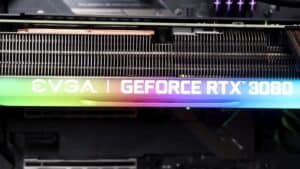
If you're a finance professional, you might be wondering if you need a dedicated GPU for your laptop. The short answer is no, you don't. A dedicated GPU is only necessary if you're using your notebook for gaming or other graphics-intensive tasks.
That being said, let's dive into the world of laptop graphics cards and see how to select the best GPU for your needs.
The changing laptop GPU market
Nvidia continues to dominate the laptop GPU market, with the RTX 30 series cards being the most widely used at the moment. Desktop GPUs are becoming increasingly power-hungry, which means that the gap between notebook graphics and desktop graphics cards has widened in recent years. Nvidia has discontinued the Max-Q label for its RTX graphics cards, which means that an exact GPU wattage is now determined by the laptop manufacturer. Unfortunately, this can result in a wide variance in graphics performance even in laptops with the same GPU chipset.
GPU vs. CPU performance in financial modeling
In financial modeling, the CPU is the most important component of your laptop. However, a GPU can come in handy when you're working with large spreadsheets or models with many visualizations. A GPU can help speed up calculations and improve rendering times.
Selecting the best GPU for your needs
When it comes to selecting the best GPU for financial modeling, Nvidia's graphics chips are more popular than AMD's. However, this doesn't mean that AMD's chips are bad – they're just not as popular.
To compare different GPUs, we'll use 3DMark since it's one of the most popular benchmarks and has a single score that can be used to compare different models from different manufacturers.
For a low-end model, we recommend a GeForce GTX 1650. This GPU should be more than enough for basic financial modeling tasks.
If you're looking for a mid-range model, we recommend a GeForce RTX 3050. This GPU offers a good balance between performance and price.
For a high-end model, we recommend a GeForce RTX 2060. This GPU has 6 GB or more of dedicated graphics memory, which is important when working with large spreadsheets or models with many visualizations.
Table of recommended graphics cards and their expected laptop prices
| Price range | Recommended GPU | Expected laptop price |
|---|---|---|
| Low-end | GeForce GTX 1650 | $500-$800 |
| Mid-range | GeForce RTX 3050 | $800-$1200 |
| High-end | GeForce RTX 2060 | $1200-$2000 |
In summary, a dedicated GPU is not necessary for financial modeling, but it can be helpful when working with large models or visualizations. When selecting a GPU, make sure to allocate at least 8 GB of RAM to it for the best performance. And remember, Nvidia's graphics chips are more popular than AMD's but don't count AMD out entirely.
Power Up Your Modeling with the Right RAM
When it comes to financial modeling, RAM is one of the most critical components of a laptop. RAM, or Random Access Memory, is used to store data that the CPU needs to access quickly. In financial modeling, this means storing the data that's being used in the model, such as assumptions and time series.
The amount of RAM you need for financial modeling depends on the complexity of the model. For basic models such as DCF, 8 GB of RAM is sufficient. However, for more complex models with many assumptions and time series, at least 16 GB of RAM is recommended.
While DDR5 RAM is the latest technology, it's still quite expensive and not yet widely available. As such, DDR4 RAM is the best choice for most laptops right now. Both Intel and AMD CPUs support DDR4 RAM, and it's readily available at reasonable prices.
When selecting RAM, there are a few other considerations to keep in mind. RAM latency and frequency can affect performance, with lower latency and higher frequency generally resulting in faster speeds. Additionally, some laptops support ECC (Error Correcting Code) RAM, which can detect and correct errors in data.
If you're looking to buy a laptop that will last for several years, it's worth investing in one with DDR5 RAM since it's becoming the standard. However, for most users, DDR4 RAM is the most practical choice right now.
Here's a table of recommended RAM configurations depending on your budget:
| Budget | Recommended RAM |
|---|---|
| Low | 8 GB |
| Mid | 16 GB |
| High | 32 GB |
In conclusion, when it comes to financial modeling, RAM is an essential component of your laptop. While the amount you need depends on the complexity of your model, at least 16 GB of DDR4 RAM is recommended. And if you're looking for a future-proof laptop, investing in DDR5 RAM is a good choice.
Financial Modeling Laptops: Common Questions Answered
Q: What is the best laptop for financial modeling?
The best laptop for financial modeling would be the Lenovo Legion 5 Pro, which is currently priced at $1,350.
What specs do I need for a laptop for financial modeling?
For financial modeling, you would need a laptop with a minimum of 8 GB of memory, a GeForce GTX 1650 graphics card, and an i3-1115G4 processor. For better performance, you can go for the medium or maximum specifications listed in the Requirements table.
Can you do financial modeling on a laptop?
Yes, you can do financial modeling on a laptop. In fact, a laptop can be a convenient and portable device for financial modeling.
What is the minimum RAM required for financial modeling on a laptop?
The minimum RAM required for financial modeling on a laptop is 8 GB. However, it is recommended to have at least 16 GB for better performance.
Is a dedicated graphics card necessary for financial modeling on a laptop?
While it is possible to do financial modeling on a laptop without a dedicated graphics card, it is highly recommended to have one. A dedicated graphics card such as the GeForce GTX 1650 will significantly improve the performance and speed up the modeling process.
What laptops are suitable for financial modeling?
Laptops that are suitable for financial modeling would be those with at least a GeForce GTX 1650 graphics card, an i3-1115G4 processor, and 8 GB of memory. Some recommended laptops for financial modeling can be found in the Recommendations table above.
What processor should I choose for financial modeling on a laptop?
The processor that you should choose for financial modeling on a laptop depends on your budget and the complexity of your modeling needs. For basic financial modeling, an i3-1115G4 processor will suffice. However, for more advanced modeling, you may want to consider a more powerful processor such as an i5-1135G7 or an i7-11370H.
How to choose the best laptop for financial modeling?
When choosing a laptop for financial modeling, you should consider factors such as budget, performance, portability, and durability. Look for a laptop with at least a GeForce GTX 1650 graphics card, an i3-1115G4 processor, and 8 GB of memory. Some recommended laptops for financial modeling can be found in the Recommendations table above.
Which brand of laptop is recommended for financial modeling?
Some recommended brands for laptops for financial modeling are Lenovo, ASUS, and Dell. However, other brands may also have suitable models that meet the required specifications.
Is a 14-inch laptop screen enough for financial modeling?
While a 14-inch laptop screen can be sufficient for basic financial modeling, it is recommended to have a larger screen for better visibility and productivity. A 15-inch or 17-inch laptop screen would be more ideal for financial modeling.
5 Best Laptops for financial modeling
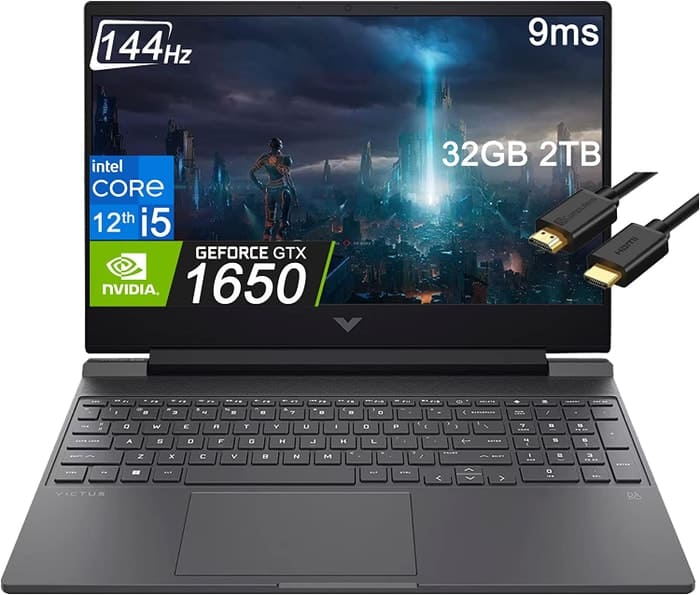
1.HP Victus 15
HP Victus 15: A budget-friendly laptop with respectable performance, but subpar gaming capabilities.- Excellent price
- Good gaming performance
- Can double as a work laptop
- Solid array of ports
- Bad battery life
- Rather plain design
- Weak GPU yields unsatisfactory frame rates
- Screen only so-so despite 144Hz refresh rate
Summary
The HP Victus 15 offers a great value for its price, with solid performance and an impressive display. While it may not excel in gaming performance, it serves as a reliable option for financial modeling and other routine tasks. However, the laptop's battery life and plain design are areas for improvement.
Alternatives
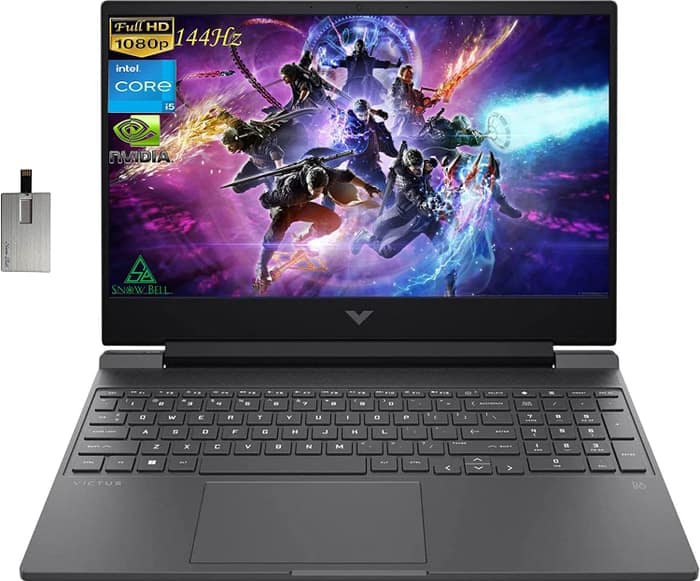
HP Victus
- Powerful CPU for smooth performance.
- Fast SSD for quick data access.
- Slow response time of the display.
- Lack of variable refresh rate.

2.ASUS TUF Dash F15
Affordable and powerful, the ASUS TUF Dash F15 is a solid option for financial modeling on a lower budget.- Lightweight and well-built design
- Good input and IO options
- Offers FHD 300Hz and QHD screen options
- More powerful than the previous generation
- Some quirks affecting everyday ergonomics
- Ports are mostly located on the left edge
- Careful consideration needed for the FHD 144Hz panel option
Summary
The ASUS TUF Dash F15 is a well-built and lightweight laptop that offers good performance for its price. With options for a high refresh rate display and a long-lasting battery, it is a competitive choice for those looking for a budget-friendly laptop for financial modeling. However, the FHD 144Hz screen option should be avoided.
Reviews
Alternatives
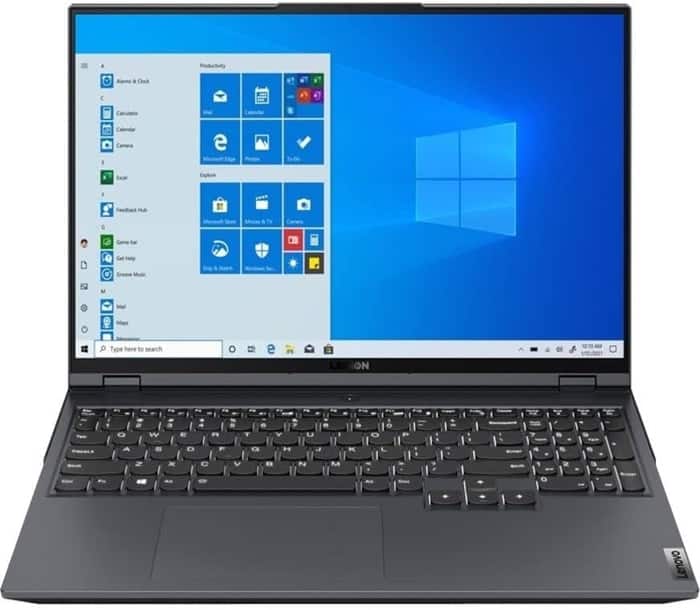
Lenovo Legion 5i Pro 16
- Stylish, sleek form factor
- Gorgeous display
- Webcam quality is poor
- No biometrics
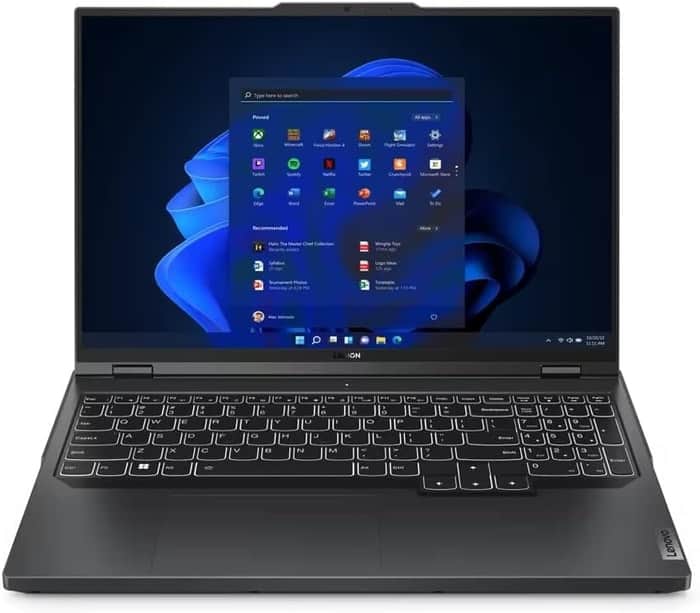
3.Lenovo Legion Pro 5
Lenovo Legion Pro 5: A solid mid-tier laptop for financial modeling, but with some drawbacks.- Good build quality and design
- Good screen and IO
- Competent CPU with three GPU options
- Competitively priced
- No Thunderbolt or biometrics
- Some hotspots while gaming
- Poor speakers
- So-so battery life
Summary
The Lenovo Legion Pro 5 is a well-built and competitively priced laptop with a good screen and performance. However, it has hotspots in sustained loads, limited battery life, and lacking speakers.
Reviews
Alternatives
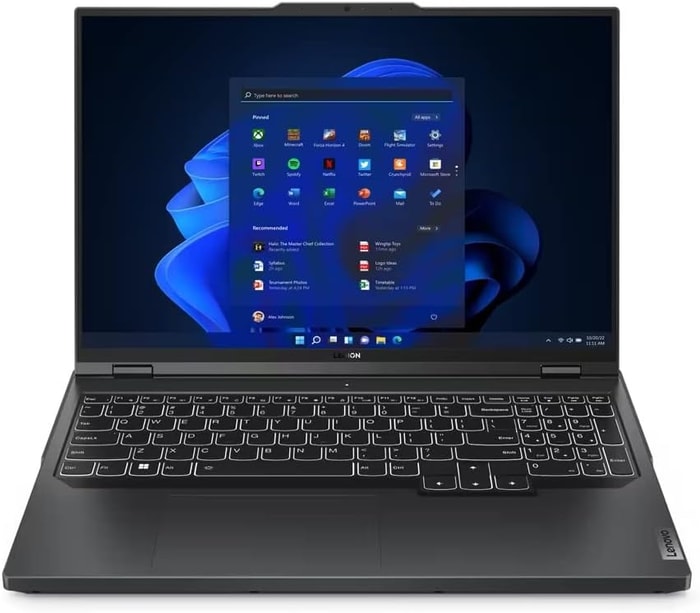 $2,840
$2,840Lenovo Legion Pro 5
- Strong performance for the price
- Quality build and port selection
- Display quality and battery life are just decent
- Bulky and heavy

4.Lenovo Legion Pro 7i 16
Lenovo Legion Pro 7i 16: Sleek design, impressive performance, and a justifiable price tag make it a coveted choice for financial modeling.- Strong overall performance
- Big, bright, and fast display
- Per-key RGB lighting
- Some flex to keyboard deck
- Poor battery life
Summary
The Lenovo Legion Pro 7i 16 is a sleek and powerful gaming laptop that offers impressive performance and value for its price. While it may have some limitations in terms of GPU performance and battery life, it is still a credible option for anyone looking for efficient performance and affordability in their financial modeling endeavors.
Alternatives

HP Omen 17
- QHD display with 165 Hz
- Expandable working memory
- Slightly below-average performance for a RTX 4080
- High noise level

5.Dell XPS 17 9720
Dell XPS 17 9720 offers an excellent 4K display and high-quality case, but its graphics performance and cooling could be improved.- Excellent 4K display with AdobeRGB
- High-quality case
- Thunderbolt 4 PCIe 4.0
- Very high system performance
- Lower graphics performance than the predecessor
- Performance not completely stable under combined load
- Not Wi-Fi 6E compatible
- 720p webcam
Summary
The Dell XPS 17 9720 impresses with its excellent 4K display and high-quality case. It also offers Thunderbolt 4 and PCIe 4.0 for fast connectivity. However, its graphics performance is lower than its predecessor and the cooling system could be better.
Reviews
Alternatives
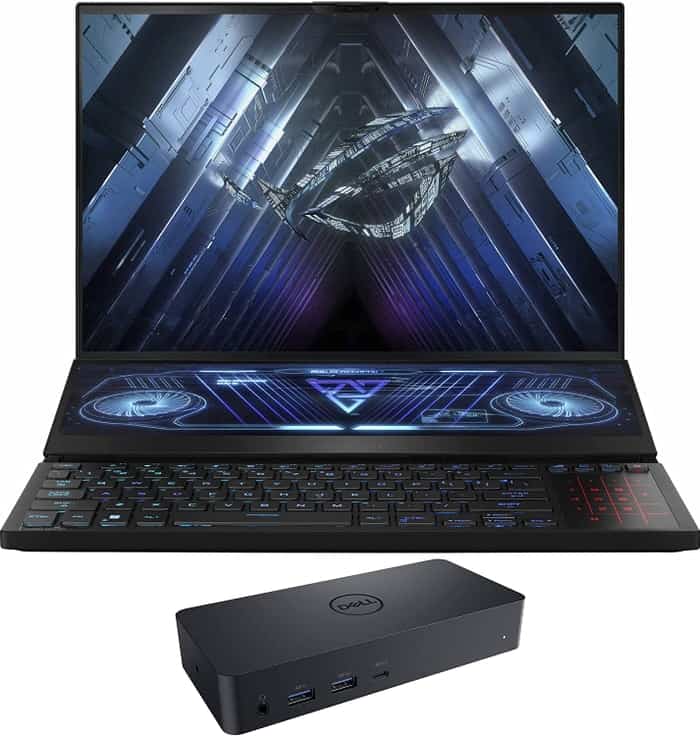
ASUS ROG Zephyrus Duo
- Impressive thin and elegant design with dual displays
- Refined two-screen layout
- High cost, especially in the configured model
- Awkward keyboard and touchpad layout
Table of the Best Laptops for financial modeling
| Laptop | Price (approx) |
| HP Victus 15 | $880 |
| ASUS TUF Dash F15 | $1,160 |
| Lenovo Legion Pro 5 | $2,630 |
| Lenovo Legion Pro 7i 16 | $3,390 |
| Dell XPS 17 9720 | $5,600 |





